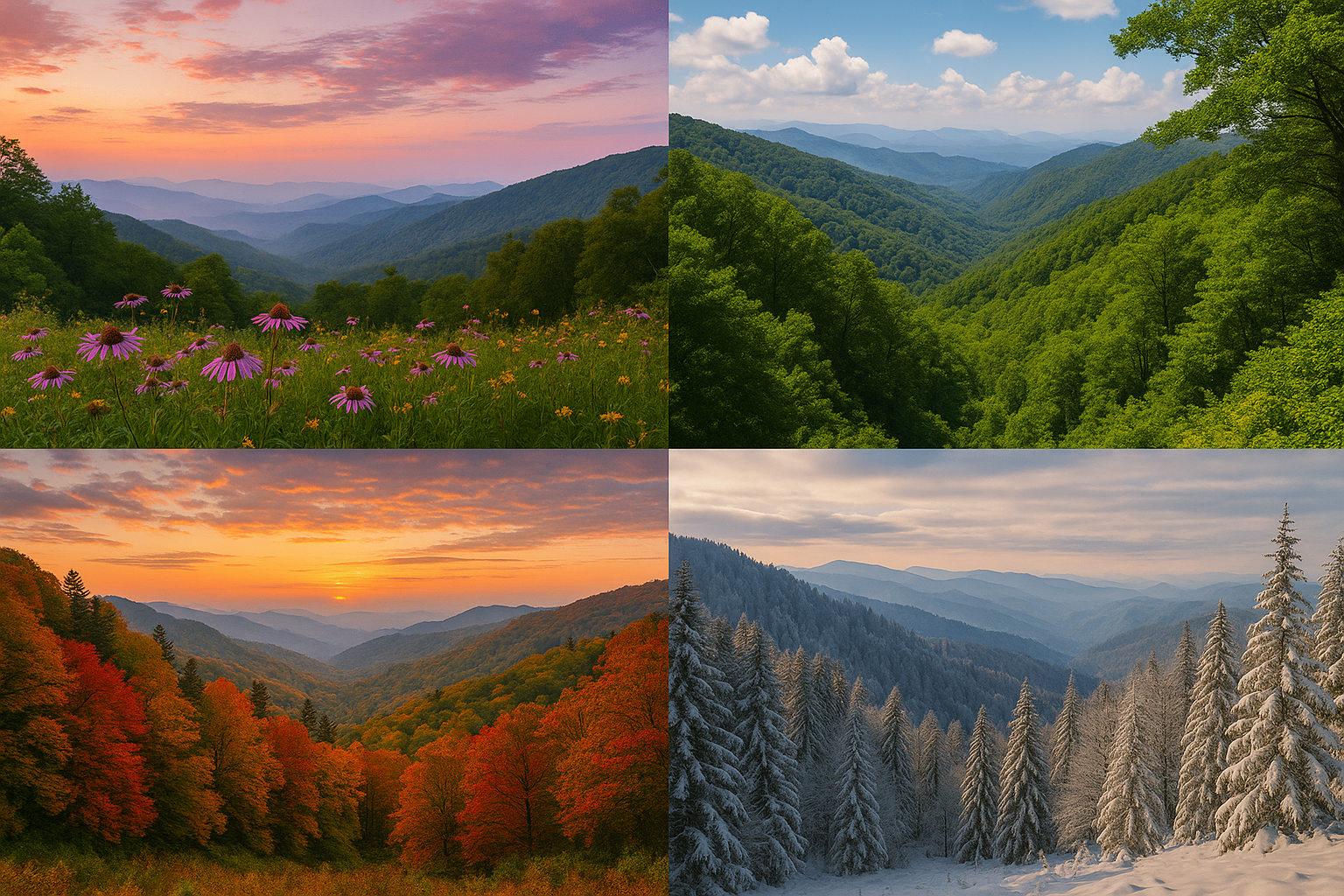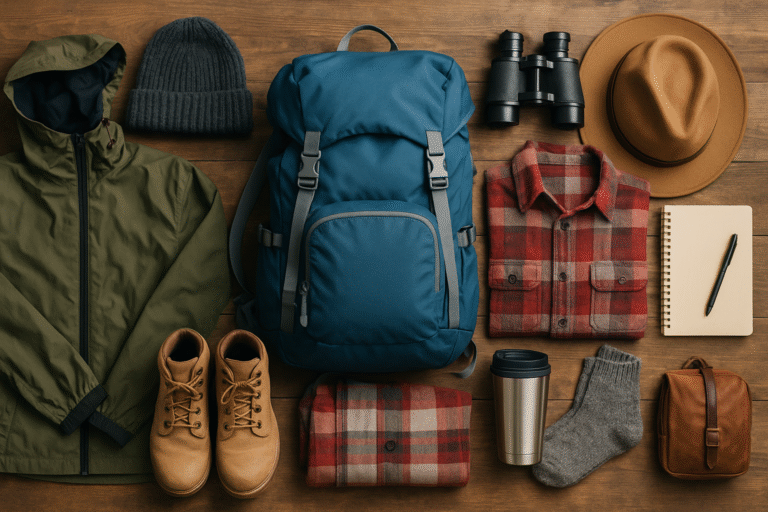
When is the best time to visit the Great Smoky Mountains? The answer depends on what you’re looking for—fiery fall foliage, wildflower hikes, snowy mountain cabins, or sunny days packed with adventure. Each season offers its own unique beauty, atmosphere, and opportunities for outdoor fun.
In this local’s guide, we’ll walk you through what to expect in each season, including weather, crowds, events, and reasons to visit. Whether you’re planning a romantic getaway, a family vacation, or a solo escape, the Smokies are a year-round destination with something for everyone.
Spring (March – May)
Why Visit in Spring:
- Blooming wildflowers and lush green forests
- Waterfalls at their fullest from spring rains
- Comfortable hiking temperatures
Weather: Mild days and cool nights. Temps range from 50–70°F at lower elevations, but can still be chilly in the mountains.
Crowds: Moderate, with spikes around Spring Break and Easter
Top Experiences:
- Attend the Spring Wildflower Pilgrimage in April
- Hike Porter’s Creek or Cove Hardwood Nature Trail for wildflowers
- Enjoy baby wildlife sightings like bear cubs and fawns
Pros:
- Waterfalls are spectacular from snowmelt
- Great photography light and fewer bugs
- Lodging is generally more affordable than in peak summer or fall
Cons:
- Rain is common—bring layers and waterproof gear
- Some roads (like Roaring Fork) don’t open until April
Summer (June – August)
Why Visit in Summer:
- Family vacations and full park access
- Lush green scenery and long daylight hours
- Dozens of festivals, concerts, and events in nearby towns
Weather: Warm to hot, especially in the valleys. Temps range from 70–90°F, with cooler temps at higher elevations.
Crowds: Highest of the year—especially in July
Top Experiences:
- Splash at Dollywood’s Splash Country or go tubing in Townsend
- Drive to Clingmans Dome for cooler temps and views
- Enjoy firefly viewing in early June in Elkmont (by lottery)
Pros:
- Great time for family-friendly activities and water fun
- All roads and trails are typically open
- Extended hours at attractions
Cons:
- Traffic and parking can be challenging in Gatlinburg & Pigeon Forge
- Afternoon thunderstorms are common
- Lodging prices are at their highest
Fall (September – November)
Why Visit in Fall:
- Stunning autumn colors—some of the best in the country
- Crisp, cool air perfect for hiking
- Seasonal festivals and fall flavors everywhere
Weather: Cool and dry. Highs in the 60s–70s, with chilly evenings
Crowds: Very high in mid-October during peak foliage
Top Experiences:
- Scenic drive on Newfound Gap Road or Foothills Parkway
- Hike Andrews Bald or Alum Cave Trail for fall views
- Visit during Oktoberfest at Ober Gatlinburg or Fall Rod Run
Pros:
- Photography opportunities are incredible
- Fall festivals and harvest décor add to the charm
- Less humidity than summer
Cons:
- Requires booking accommodations months in advance
- Traffic jams in popular areas (like Cades Cove and Roaring Fork)
- Sudden cold snaps possible
Winter (December – February)
Why Visit in Winter:
- Peace and solitude
- Snow-capped mountain views
- Cabin rentals at their coziest and most affordable
Weather: Cold and variable. Temps can range from 20s to 50s, with occasional snow at higher elevations
Crowds: Lowest of the year (except around Christmas and New Year)
Top Experiences:
- Ride the Ober Mountain Tramway and go skiing or snow tubing
- Take in holiday lights in Gatlinburg and Pigeon Forge
- Cozy up in a cabin with a fireplace and hot tub
Pros:
- Low lodging rates and more availability
- Chance for snow in the mountains
- Clear views and no foliage blocking overlooks
Cons:
- Some roads close (Clingmans Dome Road, Roaring Fork)
- Limited hours at some attractions
- Weather can cause closures or delays
Best Time by Activity
| Activity | Best Season |
|---|---|
| Hiking | Spring or Fall |
| Waterfalls | Spring |
| Wildflowers | Late March – May |
| Scenic Drives | Fall |
| Wildlife Viewing | Spring & Fall |
| Tubing/Rafting | Summer |
| Cabin Retreat | Winter or Fall |
| Photography | Fall & Spring |
| Firefly Viewing | Early Summer (June) |
When to Book & Travel Tips
- Book cabins 4–6 months in advance for fall or summer
- Visit midweek to avoid crowds and save money
- Check the National Park Service website for closures and alerts
- Download offline maps—cell service is spotty in the park
- Dress in layers year-round—mountain weather changes fast
Final Thoughts
There’s no wrong time to visit the Smokies—it just depends on what kind of experience you want. From blooming wildflowers in spring to snow-dusted peaks in winter, each season brings its own flavor to the mountains.
Use this guide to time your trip perfectly, whether you’re chasing color, chasing quiet, or chasing waterfalls.

